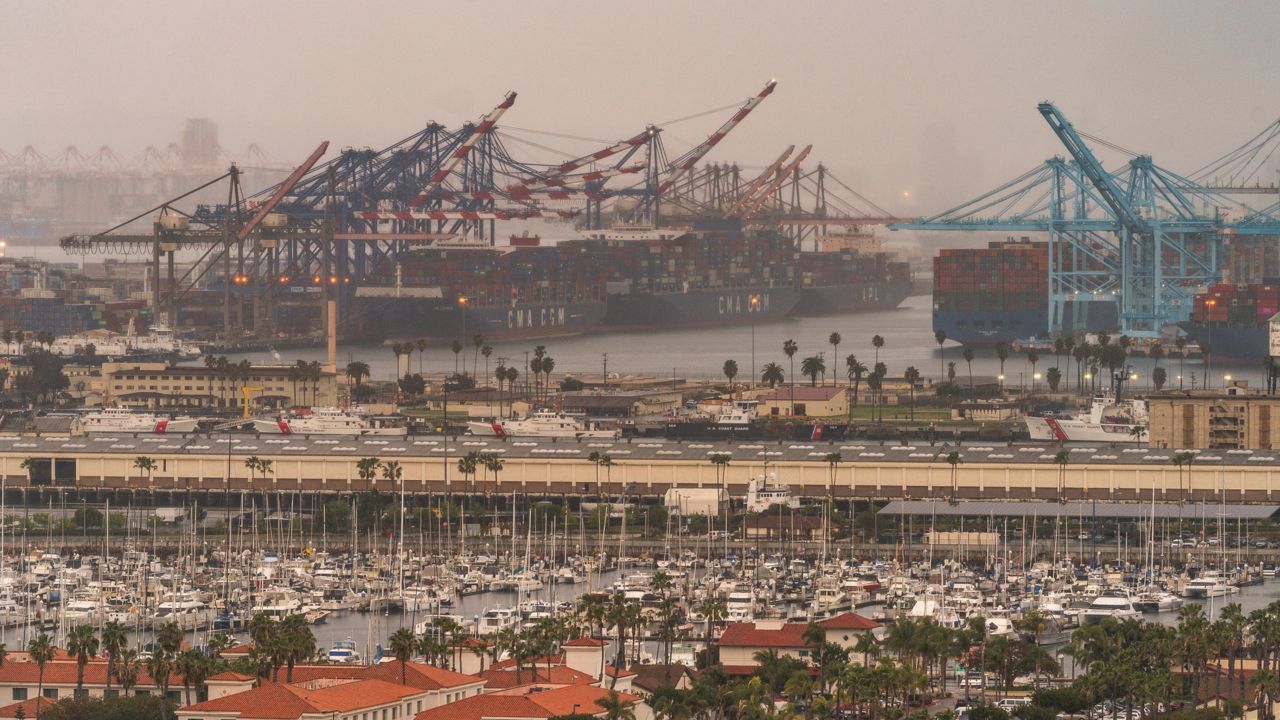LOS ANGELES — The Port of Los Angeles is expecting another 25 ships over the next three days, adding to a backlog of 62 container vessels that are already at anchor waiting to be unloaded, Executive Director Gene Seroka said Thursday.
"The cargo surge we’ve experienced for more than a year continues,” Seroka said, adding that volume at the port in September was up 2% compared to a year ago, making it the busiest September in the port’s 114-year history.
Seroka had just returned from Washington, D.C., where he met with President Joe Biden and other senior White House officials to announce the port will operate around the clock in an effort to ease an ongoing shipping surge that is delaying goods from getting to market and leading to increased consumer prices.
The 24/7 push system, as Seroka calls it, is designed to energize the rest of the goods movement chain, which has been backlogged not only at the ports but on railways and trucks. As part of the plan, the White House secured commitments from Walmart, UPS and FedEx to increase operations.
“We’re also seeing indications of the rest of the system moving more towards a 24/7 basis,” U.S. Port Envoy John Porcari said Thursday.
Starting Friday, Porcari said the 24/7 system will move into a tactical phase that will include action meetings to address specific issues that are barriers.
“It’s not flipping a light switch,” he said. “It’s a series of individual, discrete problem-solving actions that lower barriers to 24/7 operations and increase volumes.”
Acknowledging that shipping is a private sector system, Porcari said the federal government’s role in solving the supply-chain backlog is largely as a bully pulpit, “securing commitments from cargo owners to give the rest of the chain the confidence to operate 24/7 and making sure off-peak use of unused capacity [at night] is everyone’s first preference.”
Still, Porcari said his office is actively pursuing inland pop-up sites to ground containers on public or private property, so they don’t take up space at the ports. “That will provide temporary help while the longer-term capacity issues are addressed,” he said.
His office is also working with individual states to streamline the process of obtaining commercial driver’s licenses to increase the pipeline for truck drivers. Nationwide, there is a shortage of 30,000 truck drivers.
Porcari said there is no single weak link in the supply chain that is hampering Southern California’s ability to handle the ongoing cargo surge.
“Every link in the supply chain is stressed right now, and it has been for the last year and a half,” he said.
While cargo ships are currently idling on the water for 12 days before being unloaded, Seroka said there’s some good news. The number of days a container sits at a rail yard without moving is down to 4.4 days from a high of 13.5 days over the summer.
“We’ve cut the backlog of rail containers by two-thirds over the last 60 days and cut it in half over the last month,” he added, though he acknowledges there is still work to be done.
More than 125,000 companies import cargo through the Port of LA, Seroka said. Another 75,000 export goods. Combined, those companies move more than 100 trains of cargo a day out of the LA basin, with each train being at least three miles long.
Through the end of the year, Seroka anticipates cargo volumes will remain high and close out the calendar year 17% higher than at the end of 2020.



